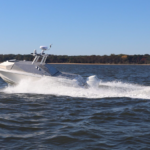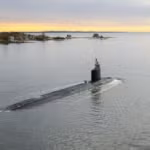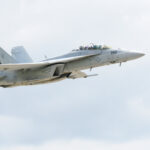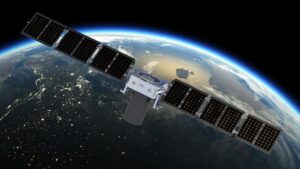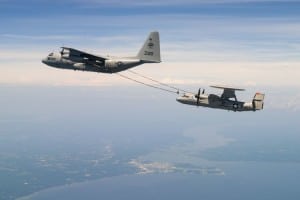
Northrop Grumman [NOC] said Tuesday that the first E-2D Advanced Hawkeye aircraft over the summer successfully received a first in-flight fuel transfer from a tanker.During a four-hour flight on July 14, pilots conducted 10 dry and two wet plugs connecting the first E-2D equipped with aerial refueling capability to a KC-130 Hercules tanker. The aircraft transferred over 1,700 pounds of fuel to the Hawkeye.The refueling-equipped E-2D first flew in Dec. 2016 at Northrop Grumman’s St. Augustine, Fla., facility before being…

 By
By 